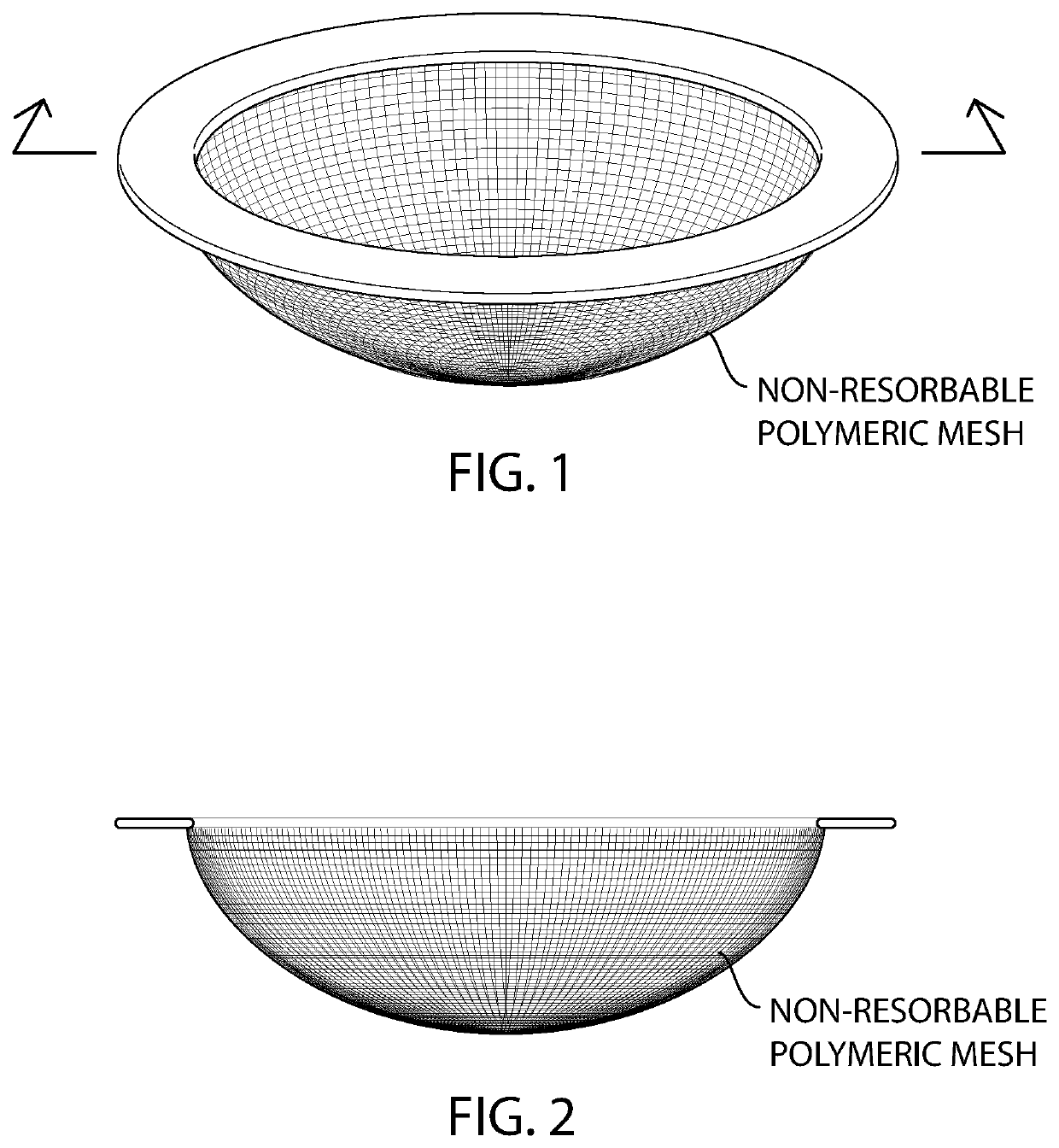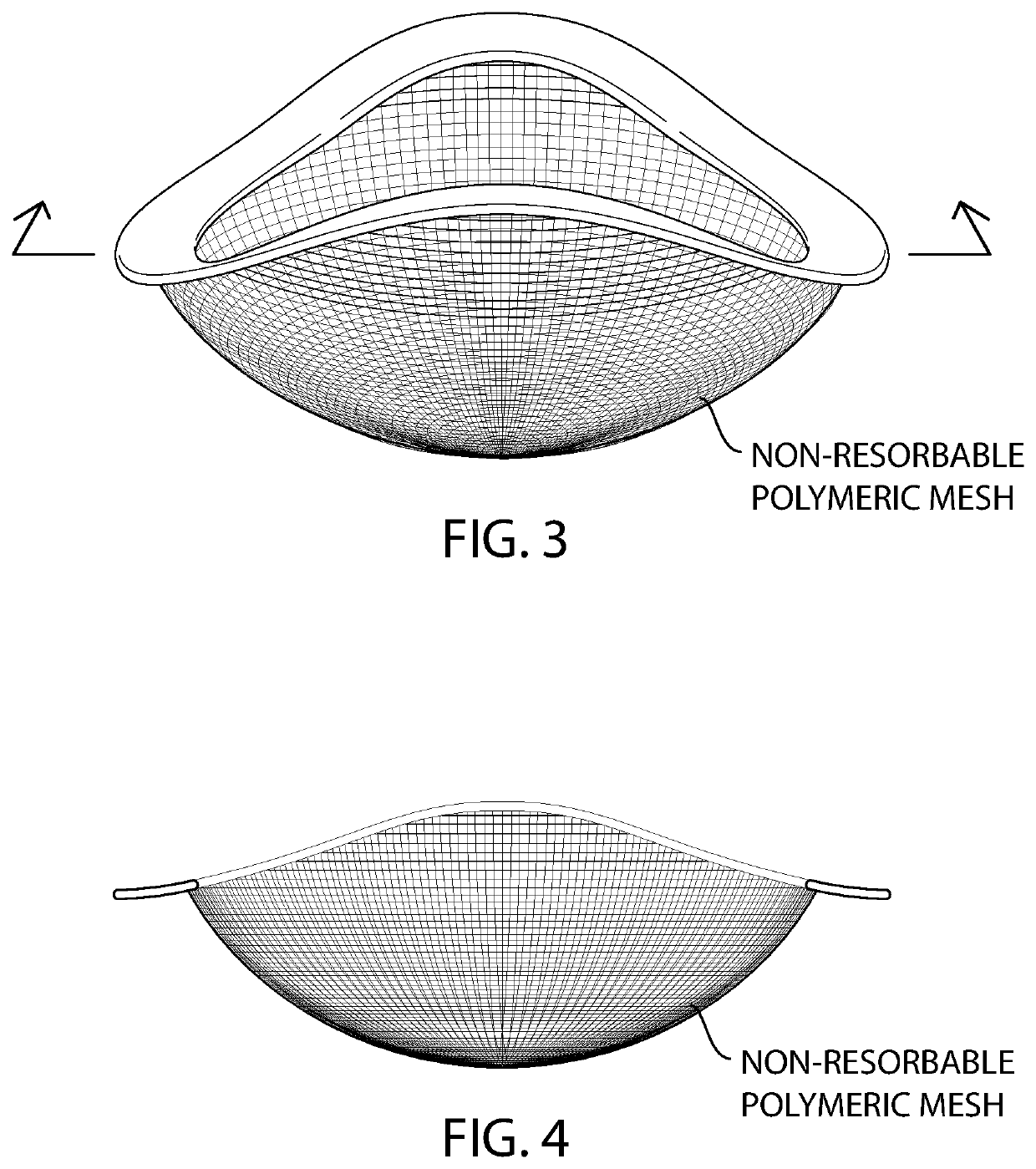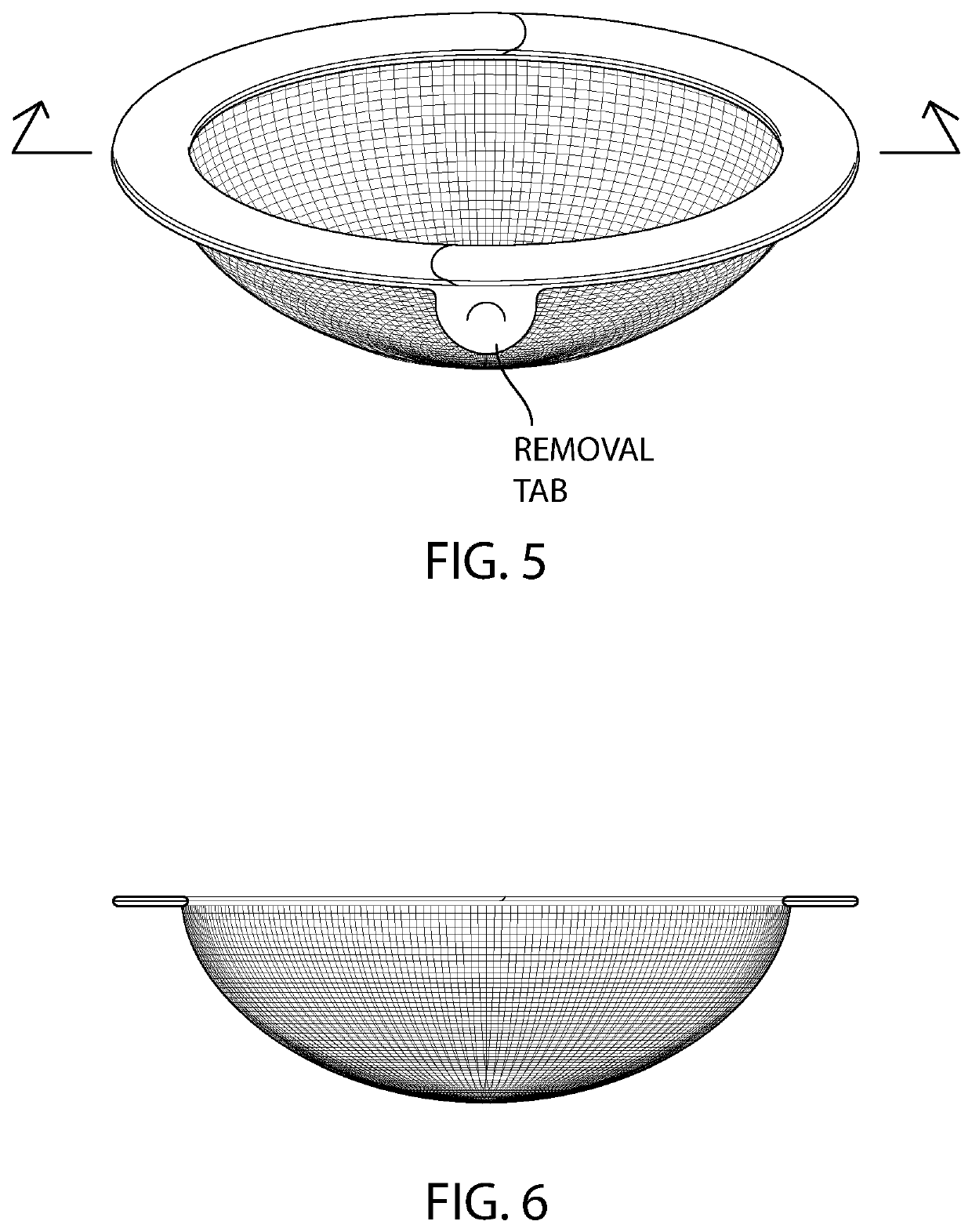Intravaginal ring devices
- Summary
- Abstract
- Description
- Claims
- Application Information
AI Technical Summary
Benefits of technology
Problems solved by technology
Method used
Image
Examples
example 1
[0079]The barrier mesh of the ring device illustrated in FIG. 1 is prepared by extruding poly(propylene), nylon, or poly(ethylene), multi- or monofilaments and using a 3D knitting machine and a warp knit pattern to create a spherical cap shape. The spherical cap shape has an outer dimeter of about 50 mm (millimeters) and a height of about 15 mm.
[0080]Alternatively, sericin-free silk fibroin multi- or monofilaments are knitted using a 3D knitting machine and a warp knit pattern to create a spherical cap-type shape where the portion of the sphere is cut off by a saddle, instead of a plane (FIG. 3). The spherical cap shape has an outer dimeter of about 50 mm (millimeters) and a height of about 15 mm.
[0081]The intravaginal contraceptive ring device illustrated in FIG. 1 is prepared using poly(ethyl-co-vinyl acetate) (EVA), about 500 (milligrams) mg of ferrous gluconate and about 400 mg of ascorbic acid which are dissolved together in approximately 10 mL of a nonpolar solvent such as dic...
example 2
ng
[0083]The barrier mesh of the ring device illustrated in FIG. 3 is prepared by extruding poly(propylene), nylon, or poly(ethylene), multi- or monofilaments and using a 3D knitting machine and a warp knit pattern to create a spherical cap-type shape where the portion of the sphere is cut off by a saddle, instead of a plane (FIG. 3). The spherical cap shape has an outer dimeter of about 50 mm (millimeters) and a height of about 15 mm.
[0084]Alternatively, sericin-free silk fibroin multi- or monofilaments are knitted using a 3D knitting machine and a warp knit pattern to create a spherical cap-type shape where the portion of the sphere is cut off by a saddle, instead of a plane (FIG. 3). The spherical cap shape has an outer dimeter of about 50 mm (millimeters) and a height of about 15 mm.
example 3
with Removal Tab
[0085]The barrier mesh of the ring device is prepared using the process from Example 1 above.
[0086]The intravaginal contraceptive ring device illustrated in FIG. 5 is prepared using poly(ethyl-co-vinyl acetate) (EVA). About 250 (milligrams) mg of ferrous gluconate are dissolved in approximately about 5 mL of a nonpolar solvent such as dichloromethane in a scintillation vial. Next, the polymeric mixture is prepared by adding about 2000 mg of EVA to the solution and mixing the EVA / drug composition using a rotary shaker.
[0087]A semi-circle of EVA / ascorbic acid is prepared using the process described above. The two semicircles are then welded together into a full circle with an outer diameter of about 55 mm and a semi-circular cross-sectional geometry.
[0088]EVA is then placed into an injection molding unit. The mold is circular with an outer diameter of about 55 mm with a removal tab protruding from one side of the circle, and has a semi-circular cross-sectional diameter...
PUM
| Property | Measurement | Unit |
|---|---|---|
| Time | aaaaa | aaaaa |
| Time | aaaaa | aaaaa |
| Antimicrobial properties | aaaaa | aaaaa |
Abstract
Description
Claims
Application Information
 Login to View More
Login to View More - R&D
- Intellectual Property
- Life Sciences
- Materials
- Tech Scout
- Unparalleled Data Quality
- Higher Quality Content
- 60% Fewer Hallucinations
Browse by: Latest US Patents, China's latest patents, Technical Efficacy Thesaurus, Application Domain, Technology Topic, Popular Technical Reports.
© 2025 PatSnap. All rights reserved.Legal|Privacy policy|Modern Slavery Act Transparency Statement|Sitemap|About US| Contact US: help@patsnap.com



